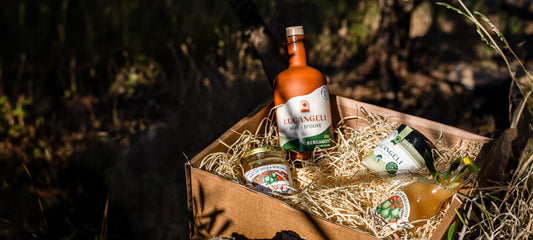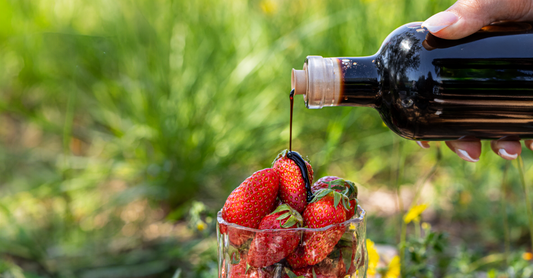Olive oil is a flagship product of Mediterranean gastronomy and a true treasure of organic farming . It is obtained by pressing olives, a fruit rich in antioxidants, vitamins, and oleic acid. The manufacturing process requires careful attention at every stage, from harvesting to bottling, to ensure superior quality olive oil. The traditional cold-press method is commonly used in Italy , Spain, and Greece , although more modern techniques are now available. The flavor of the oil varies depending on the variety of olives, ranging from green to black, and the time of harvest.
Importance of olive oil in gastronomy
In the culinary arts , olive oil is renowned for its unique taste and ability to enhance the flavors of food. It is highly valued by gourmets for its fruity flavor and undeniable health benefits . Rich in monounsaturated fatty acids, especially omega-9, and polyphenols, it is associated with a reduced risk of cardiovascular disease. It is a prime ingredient in Mediterranean cuisine, often used for cooking, salad dressings, and marinades. In addition, the consumption of extra virgin olive oil, obtained from the first pressing of olives, is particularly recommended for its superior nutritional qualities.
Olive harvest
The first crucial step inolive oil production is harvesting the olives. This step is essential because the quality and flavor of the olive oil depend largely on when and how the olives are harvested. Whether in Italy , Spain , or Greece —three countries renowned for their olive oil production—harvesting is a meticulous phase that requires great attention.
Choosing the harvest time
The time of olive harvest directly influences the taste of the olive oil produced. Olives can be harvested at different stages of ripeness. Green olives are picked earlier in the season, resulting in a more bitter and pungent olive oil. Black olives , on the other hand, are harvested later, resulting in a milder and fruitier oil. In organic farming , the harvest time is carefully chosen to ensure the best possible quality.
Harvesting techniques and methods
There are different harvesting methods used in olive growing , ranging from traditional to modern techniques. The traditional method involves handpicking each olive from the mill or using a comb to dislodge the olives. This method preserves the quality of the olives but is more laborious and expensive. Modern techniques, on the other hand, use tree-shaking machines to harvest the olives more quickly and efficiently. The olives are then transported to the oil mill for the next stage of olive oil production: pressing .
Sorting and washing olives
Olive oil production begins with sorting the olives, a crucial step to ensure the quality of the final product. During this phase, the olives are carefully selected to eliminate those that are damaged or diseased. This task can be carried out manually, following traditional methods inherited from organic farming , or mechanically in large modern farms. Green and black olives, which impart different flavors, are generally sorted separately. Just as in large olive oil-producing regions such as Spain, Italy, or Greece, sorting is an essential step in the harvest to ensure the production of superior quality olive oil.
Sorting process: elimination of bad olives
The sorting process is an essential step in theproduction of olive oil . It involves removing olives that are not in good condition and could affect the flavor of the oil. Olives can be damaged by insects, diseases, or adverse weather conditions. The olives are therefore inspected one by one to eliminate those that are not perfect. This process can be carried out by hand, following traditional methods, or mechanically, depending on the size and type of tree cultivation practiced.
Washing olives: preparation for processing
Once sorted, the olives are then washed to remove impurities and any leaf or soil residue. This washing is essential to prepare the olives for the next step in olive oil production: pressing . Washing also helps preserve the properties and flavor of the olive oil. Indeed, a clean olive allows for purer and better quality oil extraction. Washing can be done manually or with the help of modern machinery in an oil mill . After washing, the olives are ready to be pressed to extract the precious oil they contain.
Crushing the olives and extracting the paste
The first step in making olive oil is crushing the olives. This is usually done in a mill or frantoio , where the olives are put into a large traditional or modern press . The goal is to obtain an olive paste that will then be used for oil extraction . This paste is obtained by pressing the olives, whether green or black. It should be noted that the quality of olive oil depends largely on the quality of the olives used. This is why the olives are carefully selected during harvesting , which is usually done by hand to avoid damaging the fruit.
Crushing process: obtaining an olive paste
After pressing , the next step is crushing. This is a grinding process that transforms the olives into a coarse paste. This paste is then kneaded to release the oil it contains. This process must be carried out at a controlled temperature , often referred to as "cold-press" or "first-pressing," to ensure the quality and flavor of the olive oil. The ideal temperature for this process generally ranges between 27 and 32 degrees Celsius.
Factors influencing the quality of olive paste
Several factors can influence the quality of olive paste. These include the quality of the olives used, the harvesting process, the temperature of the crushing process, and the time between harvesting the olives and turning them into paste. For example, harvesting overripe or damaged olives can affect the quality of the paste and, consequently, the olive oil produced. Similarly, a crushing temperature that is too high can also affect the quality of the olive oil. Therefore, it is essential to carefully control these factors when making olive oil.
Olive oil extraction
Olive oil extraction is a delicate process that requires unique know-how to preserve the quality and flavor of this iconic product of Mediterranean gastronomy . The process begins with the harvest of olives, whether green or black, in traditional olive -growing regions such as Italy , Spain , or Greece . After harvesting, the olives are taken to the oil mill for the oil extraction process.
Traditional methods of oil extraction
The traditional method of extracting olive oil involves the use of a press . The olives are first dried and then crushed to release the oil. This process, known as trituration , is carried out in a traditional mill or frantoio . The oil is then separated from the rest of the olive pulp by pressing . This method, although laborious, is valued for its ability to preserve the oil's unique properties , including its richness in antioxidants , vitamins , and oleic acid .
Modern methods of oil extraction
With the advent of technology, modern methods of olive oil extraction have been developed. Among them, the Cold-press or First-pressing method, which produces a superior quality olive oil, known as extra virgin . This technique ensures that the oil is not exposed to high temperatures that could alter its flavor and properties. After extraction, the oil undergoes filtration and purification before being stored until bottling . Whether by a traditional or modern method, the objective remains the same: to produce an olive oil of exceptional quality for the pleasure of tasting and the benefit of health .
Olive oil production is a meticulous process that gives life to an iconic product of Mediterranean gastronomy . Every step, from harvest to bottling, is crucial to guarantee the superior quality of the oil. The choice of olive variety, the harvesting method, drying, temperature-controlled crushing, filtration, purification and finally storage, each phase is designed to preserve the flavor, nutritional properties and color of the oil. Extra virgin olive oils, produced in Italy, Spain and Greece, are particularly appreciated for their rich profile of antioxidants, vitamins and oleic acid. They are produced using the cold-press or first-pressing process, which allows for maximum nutrient retention.
Respect for traditions and innovation in olive oil production
Olive oil production techniques have evolved over time, incorporating the benefits of modern technology while respecting traditional methods. For example, in modern oil mills, green and black olives are sorted, washed, and crushed under controlled temperatures to preserve their flavor. Traditional mills, or 'frantoio,' are still used in Italy, combining the mechanical power of the press with the craftsmanship of gastronomy. Furthermore, organic farming has become an important part of olive growing, ensuring superior quality olive oil without the use of chemicals. This combination of tradition and innovation produces premium olive oils that are valued worldwide for their fruity flavor and health-promoting properties.







 lucangeli.it
lucangeli.it